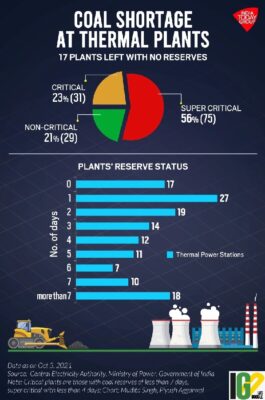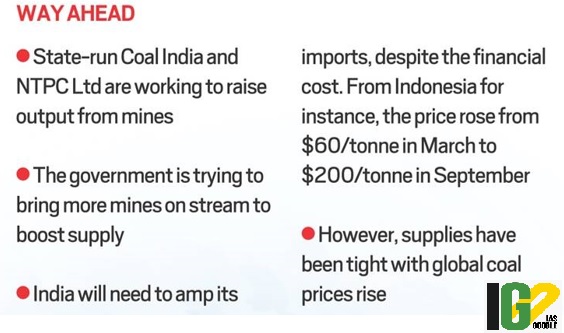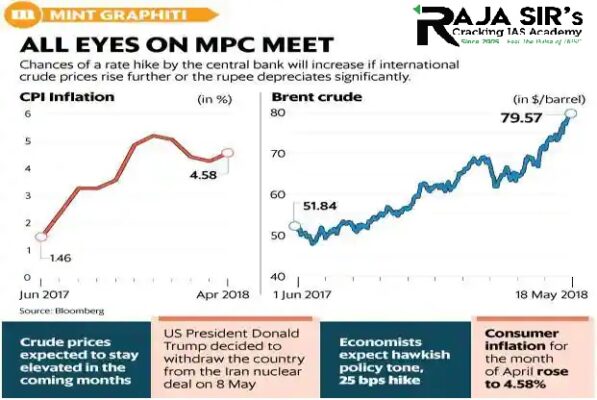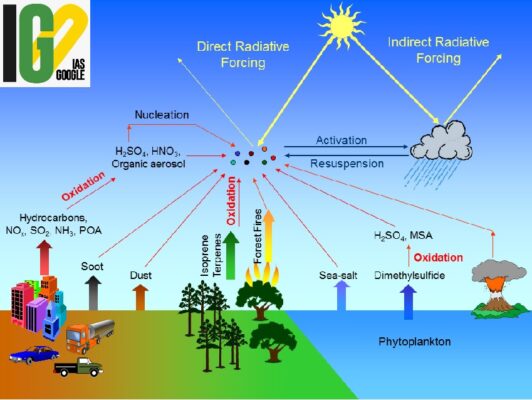- Home
- Prelims
- Mains
- Current Affairs
- Study Materials
- Test Series
 EDITORIALS & ARTICLES
EDITORIALS & ARTICLES
10th Oct 2021
RUSSIA TEST FIRES SUBMARINE-LAUNCHED HYPERSONIC TSIRKON MISSILE FOR FIRST TIME
Russia tested a Tsirkon (Zircon) hypersonic cruise missile from a submarine in the Barents Sea in the Arctic.
Highlights:








- The missile was fired from Severodvinsk submarine which hit the target.
- Hypersonic missiles, like traditional ballistic missiles can deliver nuclear weapons, and fly more than five times the speed of sound.
- 3M22 Zircon is a scramjet powered manoeuvring anti-ship hypersonic cruise missile currently in testing by Russia.
- A scramjet (supersonic combustion ramjet) is a variant of a ramjet airbreathing jet engine in which combustion takes place in supersonic airflow.
- An anti-ship missile (AShM) is a guided missile that is designed for use against ships and large boats.

- CEA monitors coal stocks at 135 power plants that have a cumulative generation capacity of 165 GW on a daily basis.
- On October 3, 2021, the total coal stocks available at these 135 plants was 78,09,200 tonnes, which were only sufficient for four days.
- The daily coal requirement of these plants is 18,24,100 tonnes.
- Coal accounts for over 70% of India's electricity output, and utilities account for about 75% of India's coal consumption.
- National Coal Development Corporation (NCDC), was setup in 1956 for planned development of coal sector in India.
- Coking Coal Mines (Emergency Provisions) Act, 1971; Coking Coal Mines (Nationalisation) Act, 1972; Coal Mines (Taking Over of Management) Act, 1973 nationalized coal mining. The distribution in India was brought under a PSU Bharat Coking Coal Limited (BCCL).
- Liberalisation reforms in 1993 allowed for private captive consumption (for usage in private venture, not for distribution) of coal.
- In 2012 demand-supply gap increased to 20% and Coal Mines (Special Provisions) Act was enacted in 2015, allowing allocation of coal mines through auctions.
- In 2018, privatization of commercial coal mining was allowed to further bring parity between demand and supply.
- Despite these measures, India is still the second largest importer of coal. Coal is imported chiefly from Indonesia, Australia and South Africa.
- Coking Coal is imported by Steel Authority of India Limited (SAIL) among other manufacturing units to compensate the demand not fulfilled by domestic supply of coal.
-
Non-coking coal is imported by coal-based power plants, cement plants, captive power plants, sponge iron plants, industrial consumers and coal traders.
- Coke is imported for industries using blast furnace operation.

- Surge in energy demand due to reopening of economy after the second wave of the coronavirus pandemic from 106 billion units in August 2019 to 124 billion units in August 2021.
- Demand has outweighed supply despite increase in buying from Coal India.
- Power Plants failed to build their pre-monsoon stocks due to heavy rains in September 2021, leading to delays in production and delivery.
- Global resetting of economy in the post-pandemic months has resulted in driving up the fuel prices and imports of coal have fallen as a result.
- For instance, the recent power crisis in China has hiked global energy pricing due to higher demand.
- Power outage can cause delay in economic reopening due to downscaling of production. It can further drive-up global fuel price.
- It can also cause domestic fuel price to rise which will have a domino effect on inflation and power prices.
- This will cause state-run distribution companies to run into losses and delay cash flow to the generation sector.
- Further, it will disincentivise investments in the power sector.

- Crude prices are risen sharply in 2021 due to the recovery in global demand, which was lessened due to COVID-19 pandemic.
- Supply restrictions are maintained by the OPEC+ grouping is also keeping international oil prices high.
- These oil-producing economies have signalled a slow production increase, leading to a rise in gas prices as well.
- A shortage of natural gas in Europe and Asia has boosted demand for oil for power generation.
- The rise in crude prices has contributed to petrol and diesel prices hitting all-time highs in India.
- Prices of petrol and diesel in India are pegged to a 15-day rolling average of the international prices of these fuels.
- In sectors where oil is a major cost component, a negative reaction on returns can be expected.
- A sharp surge in oil prices can create rise in stocks as increasing oil prices often reflect growing demand in the economy.
- When oil futures turned negative in 2020 at the peak of the pandemic, stock markets bottomed out.
- For bonds, central bank (RBI) policies will play a far greater role than the direct impact of rising oil prices.
- Rising crude prices tend to depreciate the rupee, as India being a major importer of oil needs more dollars to buy the same amount of crude.
- Crude import accounts for nearly 20% of India’s import bill.
- A rise in prices could lead to a surge in inflation, forcing the RBI to go for liquidity tightening measures followed by rate hikes.
- An increase in crude prices means an increase in the cost of producing and transporting goods. It thus adds to inflation; an increase of $10/barrel in crude oil prices could raise inflation by 10 basis points.

- High Ambition Coalition (HAC) for Nature and People is a group of 70 nations promoting the adoption of the global goal to protect 30x30 (30 percent of the world’s land and ocean by 2030).
- It was founded by the Republic of the Marshall Islands in 2014 with the aim of ensuring the Paris Agreement. It serves as the convener and secretariat of the HAC.
- It is an informal mix of countries in the global north and south; European, Latin American, Africa and Asia within the UN Framework Convention on Climate Change (UNFCCC).
- India is the first among the BRICS bloc to join the HAC.
- Resource mobilisation among the member countries will prove to the keystone to implement policies and conserve biodiversity.
- Inclusion of India, being the biodiversity player, will boost the multilateral efforts to protect world’s land and ocean.

- Main sources of aerosols in the central Himalayan region:
- Mineral dust, biomass burning, secondary sulphate, secondary nitrate from northwest India and Pakistan, polluted cities like Delhi, the Thar Desert, and the Arabian Sea area.
- Long-range transported marine mixed aerosols
- This dust transport and forest fires are the main sources of total suspended particles (TSP), particularly in pre-monsoon period.
- In the period (March-May) TSP concentration peaks in the region.
- Carbonaceous aerosols (Organic Carbon (OC) and Elemental Carbon (EC) are the maximum in winter due to the intensification of biomass burning over the Indo Gangetic Plains and the Himalayas because of domestic heating and shallower mixing layer.
- The present preliminary results can supplement emission inventories and contribute to an effective assessment of climate impacts over the region.
- Total suspended particulate (TSP) refers to the totality of small solid matter released, documented or observed in the atmosphere.
- It is the dry-weight of suspended particles, that are not dissolved.
- It is considered to be a primary contributor to air pollution, smog formation and environmental contamination.
- Carbonaceous material is one important component of atmospheric particulate matter.
- Organic carbon (OC) includes primary organic carbon (POC) and secondary organic carbon (SOC).
- These are mainly created from fossil fuel combustion, with relatively little contribution from natural sources.

- Japan and Singapore stood hold the first rank on the passport index. The Passport holders of these countries are allowed to travel visa-free to 192 countries.
- The list of Powerful passport index is:
- Japan, Singapore (Score: 192)
- Germany, South Korea
- The list of Least passport index is:
- Afghanistan (Score: 26)
- Iraq (28)
- Syria (29)
- Pakistan (31)
- India was on the 84th position in 2020 & slipped six places to 90th position in 2021.
- India passport holder can travel up to 58 countries as visa on arrival.
- The index was first published by Henley & Partners in 2006.
- It lists the world’s passports according to the number of destinations their holders can access without a prior visa.
- The ranking is based on data from International Air Transport Association (IATA), a trade association of some 290 airlines, including all major carriers.
- The index includes 199 different passports and 227 different travel destinations.
- The strength of a passport is defined as the countries to which holders are eligible to travel without a visa.
- The Index gives a fair estimate of cross border flows of people. The countries whose citizens can travel unhindered across borders have more vibrant economies.









 Latest News
Latest News General Studies
General Studies